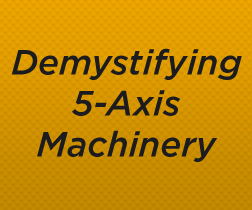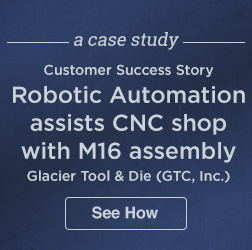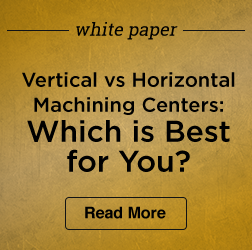 Gosiger takes the time to understand all of the design issues when implementing factory automation. Factory automation increases productivity and lowers operating costs; just ask Fulton Precision Industries, Inc.
Gosiger takes the time to understand all of the design issues when implementing factory automation. Factory automation increases productivity and lowers operating costs; just ask Fulton Precision Industries, Inc.
 Gosiger takes the time to understand all of the design issues when implementing factory automation. Factory automation increases productivity and lowers operating costs; just ask Fulton Precision Industries, Inc.
Gosiger takes the time to understand all of the design issues when implementing factory automation. Factory automation increases productivity and lowers operating costs; just ask Fulton Precision Industries, Inc.
Whether you are looking for ways to improve quality, allow for just-in-time (JIT) delivery, or increase production volume, today’s advanced Okuma CNC machines are your best solution. CNC machine centers, lathes, and grinders reduce scrap, increase precision and maintain repeatability over large part runs that manual machines and machines built just a decade ago cannot match.
Hardinge FlexC collet systems are compatible with many CNC lathes and are interchangeable with other brands on the market. Substitute a FlexC collet system for 16C, 20C and 25C collet applications to meet special accuracy requirements, or mount it on a chuck-style lathe or rotary indexer for increased versatility. The spindle mount will fit on A2-5, A2-6, A2-8 and some flat back spindles (main and sub). Once the FlexC spindle mount is attached, different collet head sizes can be interchanged from job to job. Hardinge stocks 42 and 65mm collet sizes in round smooth and serrated styles. Hex and square sizes are made to order. Some examples of custom-manufactured applications include stepped holes, special shapes and off-center work.
 The hallmark of most high-performance CNC machining centers is consistent precision. In fact, 3-axis machining centers have become the mainstay of the vast majority of production shops and have even made substantial inroads into the short-run, job shop environment. However, like any other technology CNC machining has, and continues to, evolve in terms of sophistication and flexibility. Today, 3-axis machining is actually the minimum capability needed to compete in the global marketplace.
The hallmark of most high-performance CNC machining centers is consistent precision. In fact, 3-axis machining centers have become the mainstay of the vast majority of production shops and have even made substantial inroads into the short-run, job shop environment. However, like any other technology CNC machining has, and continues to, evolve in terms of sophistication and flexibility. Today, 3-axis machining is actually the minimum capability needed to compete in the global marketplace.
Manufacturers often cite lack of rigidity as the greatest single obstacle in successfully turning small diameter parts such as those produced on Swiss-style lathes. Invariably, marginal, or in some cases, complete lack of rigidity results in vibration issues. The vibration in turn, results in poor surface finish and often, parts that are out of tolerance. Recognizing the difficulties associated with turning small diameter parts, Nomura long ago adopted a manufacturing philosophy centered on strict design and development parameters aimed specifically at the inherent problems encountered in this type of machining.
 The complex process of integrating CNC machines, robotics, and various other manufacturing assets into a smooth-running factory automation solution is a discipline gained from experience. Gosiger began automating machines in 1988, employing Fanuc robots on a project for Caterpillar. Gosiger has maintained a close and ongoing relationship with Fanuc ever since.
The complex process of integrating CNC machines, robotics, and various other manufacturing assets into a smooth-running factory automation solution is a discipline gained from experience. Gosiger began automating machines in 1988, employing Fanuc robots on a project for Caterpillar. Gosiger has maintained a close and ongoing relationship with Fanuc ever since.
In today's intensely competitive manufacturing environment, the capabilities of the equipment and the knowledge needed to maximize those capabilities often separates the winners from the losers. New CNC machines perform on a level unimagined just a few decades ago. The versatility and precision of modern CNC machine tools allows manufacturers to produce parts of almost unlimited configurations, for virtually any industry. The key is using the CNC machine to its full potential, being able to mix and match other equipment assets to produce high-quality parts that conform to exacting specifications, at the lowest possible cost. This is where a partner like Gosiger can elevate your competitive presence into a clear advantage.
Gosiger Automation combines Fanuc robot and Okuma machine tool for oil coupling production improvement.
Gosiger Dayton Recognized for 2010 Sales Achievements
 CNC machining centers come in two basic types; horizontal and vertical. The difference between the two types is the orientation of the spindle. Generally speaking vertical CNC machining centers favor precise work, and are usually your first acquisition due to their relatively low-cost. Horizontal CNC machining centers, on the other hand, lend themselves to production, and can be a higher-end purchase.
CNC machining centers come in two basic types; horizontal and vertical. The difference between the two types is the orientation of the spindle. Generally speaking vertical CNC machining centers favor precise work, and are usually your first acquisition due to their relatively low-cost. Horizontal CNC machining centers, on the other hand, lend themselves to production, and can be a higher-end purchase.